
|
CARDIOLOGY ONLINE NEWS |
 |
| 19th WORLD CONGRESS ON HEART DISEASE |
|
TEMPORAL VARIATION IN ACUTE AORTIC DISEASES: ONLY A RANDOM PHENOMENON?
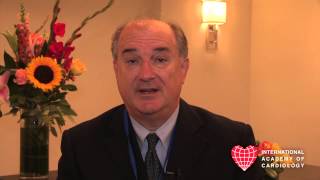
Roberto Manfredini, M.D., University of Ferrara, Italy
Chronobiology is a branch of biomedical sciences devoted to the study of biological rhythms, that according to cycle length, are classified into: circadian (period of around 24 hours), ultradian (less than 24 hours), and infradian (more than 24 hours, e.g., days, weeks, months), and their interactions with bodily functions. MORE»
|
DEMOGRAPHIC CHANGES IN CONGENITAL HEART DISEASE IN THE XXI CENTURY: IMPACT IN MANAGEMENT AND OUTCOMES

A.J. Marelli, M.D., M.P.H., Mc Gill University Health Centre, Montreal, QC, Canada
The field of complex congenital heart disease (CHD) has evolved greatly, allowing for more patients to survive into adulthood. Emerging is a new era of changing demographics that must be matched with services and infrastructures commensurate with its growth. MORE»
|
TRAINING OF CARDIOVASCULAR PHYSICIAN-SCIENTISTS: RESULTS OF SPECIFIC TRAINING PATHWAYS

James D. Marsh, M.D. ,
University of Arkansas for Medical Sciences, Little Rock, AR, USA
Physician-scientists play a crucial role in biomedical research in the United States. However, the number and portion of MD’s who commit a major portion of their professional time to research and who receive major external funding is diminishing. MORE»
|
PREVENTION OF STROKE IN ATRIAL FIBRILLATION: ARE ALL ORAL DRUGS THE SAME?
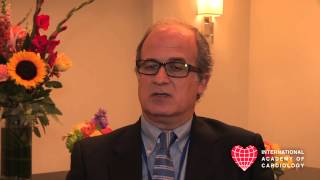
Antoni Martinez-Rubio, M.D., Ph.D.,
University Hospital of Sabadell (Univ Autonoma de Barcelona), Sabadell, Spain
Prevention of thromboembolic events using oral anticoagulant drugs (OAC) is mandatory in several patients with atrial fibrillation. Therefore, OAC have been developed and used since decades. However, efficacy of these must be well balanced with the risk of inherent bleeding complications. MORE»
|
SATURATED FAT INTAKE AND THE GENESIS OF CORONARY ARTERY DISEASE – WHERE’S THE EVIDENCE?
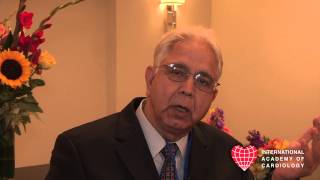
Jawahar L. Mehta, M.D., Ph.D. University of Arkansas for Medical Sciences, Little Rock, AR, USA
Dietary saturated fat intake has long been blamed for causing coronary artery disease based on scant epidemiological data. However, little evidence supports the notion that reducing saturated fat intake would reduce coronary artery disease. MORE»
|
STEM CELL AND GENE THERAPY FOR HEART FAILURE

Leslie W. Miller, M.D.,
University of South Florida, Tampa, FL, USA
The number of patients with advanced heart failure who are still symptomatic despite optimized medical therapy continues to increase. Therapeutic options for this population have been limited to heart transplant or use of LVADs. MORE»
|
INTEGRATIVE AND COMPLEMENTARY MEDICINE IN CARDIOLOGY: NEW HOPE OR JUST HIP AND HYPE?

Freny V. Mody, M.D.,
VA Greater Los Angeles HCS, CA, USA
Objectives: To review rigorous scientific evidence of benefit and effective treatments in integrative medicine (IM) for cardiovascular disease (CVD). IM integrates traditional medicine with non-conventional therapeutic modalities referred to as complementary alternative medicine (CAM). MORE»
|
CARDIAC SURGERY IN THE ADULT CONGENITAL HEART DISEASE PATIENT: A SPECTRUM OF LESIONS
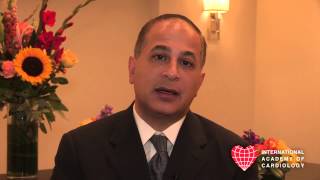 Bassem N. Mora, M.D.,
Sheikh Khalifa Medical City, Cleveland Clinic, Abu Dhabi, United Arab Emirates Bassem N. Mora, M.D.,
Sheikh Khalifa Medical City, Cleveland Clinic, Abu Dhabi, United Arab Emirates
Objectives: To discuss the spectrum of anomalies which require cardiac surgery in the adult congenital heart disease (ACHD) patient.
Background: There are >1,000,000 ACHD patients in North America. Cardiac surgery in those is divided into three categories MORE»
|
RESIDUAL VASCULAR RISK AFTER STATIN THERAPY: THE PROMISE OF NOVEL LIPOPROTEIN BIOMARKERS

Samia Mora, M.D., M.H.S.,
Brigham and Women's Hospital, Harvard Medical School, Boston, MA, USA
Objectives: Statins are the most widely used lipid-lowering agents and the standard of care for individuals with dyslipidemia, prior CVD, or at high-risk for CVD. However, the risk among statin-treated individuals remains high and has been termed “residual risk”. MORE»
|
INDOXYL SULFATE AND CARDIO-RENAL SYNDROME; THE ROLE OF ARYL HYDROCARBON RECEPTOR
 Toshisuke Morita, M.D., Ph.D.,
Toho University Omori Medical Center, Ota-ku, Tokyo, Japan Toshisuke Morita, M.D., Ph.D.,
Toho University Omori Medical Center, Ota-ku, Tokyo, Japan
The aim of this lecture is to discuss research involving the ligand of the aryl hydrocarbon receptor (AhR) and their role in cardio-renal syndrome. AhR is a ligand-activated nuclear receptor/transcription factor belonging to the basic helix-loop-helix/per-AhR nuclear translocator-Sim family of proteins. MORE»
|
UPDATE ON CORONARY BIFURCATION CLASSIFICATION AND TECHNIQUES

Mohammad R. Movahed, M.D., Ph.D.,
The Southern Arizona VA Health Care System, Tucson, AZ, USA
There are many classifications for coronary bifurcation lesions. This talk will focus on most comprehensive classification of bifurcation lesions that is simple, practical and inclusive of other important features of coronary bifurcation lesions that are not mentioned in other classifications. MORE»
|
MECHANISMS OF HYPERTROPHY IN VALVULAR HEART DISEASE
 Niels T. Olsen, M.D., Ph.D.,
Rigshospitalet, Copenhagen, Denmark Niels T. Olsen, M.D., Ph.D.,
Rigshospitalet, Copenhagen, Denmark
Myocardial hypertrophy has a prominent role in valvular heart disease. The evaluation of hypertrophy is invaluable when determining the hemodynamic significance of a valve lesion, as the myocardium responds to increased load from regurgitant or stenotic valve lesions with growth in predictable patterns. MORE»
|
MEDITERRANEAN DIET AND SECONDARY PREVENTION OF CVD

Demosthenes B. Panagiotakos, Ph.D.,
Harokopio University, Athens, Greece
Adherence to a healthy dietary pattern, such as the Mediterranean diet, exerts a beneficial role regarding the development of coronary heart disease. In addition, several studies support the protective role of the Mediterranean diet as far as secondary prevention of CVD is concerned.MORE»
|
GENETIC DISRUPTION OF NPR1 UPREGULATES CARDIAC EXPRESSION OF PROINFLAMMATORY MEDIATORS
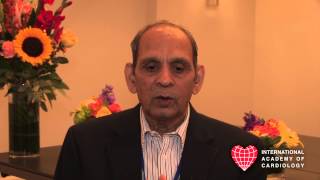 Kailash N. Pandey, Ph.D. Tulane University School of Medicine, New Orleans, LA, USA Kailash N. Pandey, Ph.D. Tulane University School of Medicine, New Orleans, LA, USA
Proinflammatory cytokines play a central role in the pathophysiology and development of endothelial dysfunction, cardiac hypertrophy, and heart failure in experimental animal models and humans. MORE»
|
MANAGEMENT OF ATRIAL FLUTTER
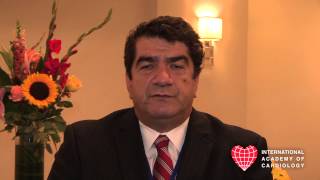
Hakan Paydak, M.D.,
University of Arkansas for Medical Sciences, Little Rock, AR, USA
Atrial flutter affects nearly 1 million people in the United States, particularly the older age group and men. It is frequently seen in patients with heart failure, hypertension, diabetes mellitus, COPD and in postoperative states. MORE»
|
HAND HELD CARDIAC ULTRASOUND: ROLE IN CLINICAL PRACTICE
 Patricia A. Pellikka, M.D.,
Mayo Clinic College of Medicine and Mayo Foundation, Rochester, MN, USA Patricia A. Pellikka, M.D.,
Mayo Clinic College of Medicine and Mayo Foundation, Rochester, MN, USA
Technologic advances have resulted in miniaturization of ultrasound systems. Battery-operated, hand-held cardiac ultrasound devices (HHCU) devices weigh less than one pound, fit into the pocket of a laboratory coat, and have been approved by the FDA for cardiac imaging. MORE»
|
LEFT VENTRICULAR FUNCTION IN PATIENTS WITH CHRONIC TOTAL OCCULSION OF LAD: LONG-TERM FOLLOW-UP

Maria Prokudina, M.D., Ph.D.,
Federal Center of Heart, Blood and Endocrinology, St. Petersburg, Russia
Background: There is no agreement regarding the revascularization of patients with chronic total occlusions (CTO) of left descending artery (LAD) and signs of ischemia. One of the treatment goals is improvement of left ventricle (LV) function. MORE»
|
MECHANISMS OF HYPERTROPHY IN VALVULAR HEART DISEASE
 Niels T. Olsen, M.D., Ph.D.,
Rigshospitalet, Copenhagen, Denmark Niels T. Olsen, M.D., Ph.D.,
Rigshospitalet, Copenhagen, Denmark
Myocardial hypertrophy has a prominent role in valvular heart disease. The evaluation of hypertrophy is invaluable when determining the hemodynamic significance of a valve lesion, as the myocardium responds to increased load from regurgitant or stenotic valve lesions with growth in predictable patterns. MORE»
|
ATORVASTATIN ATTENUATES ATHEROSCLEROSIS IN THE VALVES AND FEMURS FROM HYPERCHOLESTEROLEMIC LDLR-/- MICE AS=OP 
Nalini M. Rajamannan, M.D., Northwestern University Feinberg School of Medicine, Chicago, IL, USA
Atherosclerosis and osteoporosis are the leading causes of morbidity and mortality in the aging population in the Unites States. Evidence indicates that hyperlipidemia plays a paradoxical role in these disease processes. MORE»
|
ATYPICAL AND UNUSUAL CLINICAL PRESENTATIONS OF PATIENTS WITH ISCHEMIC HEART DISEASE 
Hanumanth K. Reddy, M.D.,
St. Louis University Medical School, St. Louis, Missouri, USA
Ischemic heart disease is the leading cause of death worldwide accounting for 7 million deaths annually. Chest pain is the cardinal symptom in patients with ischemic heart disease (IHD). MORE»
|
TRANSLATION OF HDL FUNCTIONALITY INTO CLINICAL PRACTICE
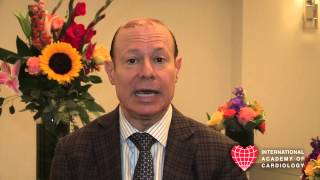
Robert S. Rosenson, M.D., School of Medicine at Mount Sinai, New York, NY, USA
HDL is conventionally quantified by the cholesterol cargo transported in these protein rich lipoprotein particles. In prospective population studies and clinical trials with low to moderate intensity statins, HDL cholesterol (HDL-C) is biomarker of atherosclerotic cardiovascular disease (ASCVD) risk. MORE»
|
DEVICE CLOSURE OF COMPLEX ATRIAL SEPTAL DEFECT IN ADULTS- ISSUES AND SOLUTIONS
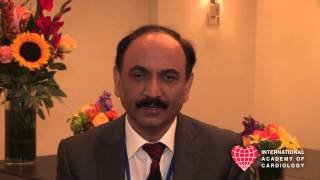
Masood Sadiq, M.D., The Children's Hospital/The Institute of Child Health, Lahore. Pakistan
A complex ASD is defined as presence of a large- >20mm (stretched diameter = 26 mm) ASD associated with a deficient (= 4 mm) rim located at the anterior, inferior, or posterior portion of the atrial septum, two separate ASDs within the atrial septum (distant or close to each other); and multi-fenestrated septum, defects associated with a floppy, redundant, and hyper mobile atrial septum (excursion = 10 mm), considered to be aneurysmal, irrespective of their size. MORE»
|
BENEFIT AND RISKS OF ANTIDIABETIC TREATMENT IN PATIENTS WITH CORONARY ARTERY DISEASE AND HEART FAILURE

Christoph H. Saely, M.D., VIVIT Institute, Academic Teaching Hospital, Feldkirch, Austria
Diabetes mellitus is a paramount risk factor both for coronary artery disease (CAD) and heart failure, and the prevalence of diabetes among patients with CAD or heart failure is high. While better glucose control epidemiologically is associated with a lower incidence of cardiovascular events, lowering blood glucose failed to lower the incidence of macrovascular diabetes complications, i.e. of atherosclerotic cardiovascular disease in multiple trials, in particular among patients with established CAD. MORE»
|
PHARMACOLOGICAL MODULATION OF ANGIOTENSIN-II-INDUCED ARTERIAL MONONUCLEAR CELL ADHESION BY NUCLEAR RECEPTORS ACTIVATION

Maria J. Sanz, Ph.D., Institute of Health Research INCLIVA, Valencia, Spain
The need of effective strategies to treat and prevent atherosclerosis led us to investigate the effect of combined concentrations of Rosuvastatin (Rosu) and bexarotene (Bex) on angiotensin II (Ang-II)-induced arterial mononuclear cell (MC) recruitment. MORE»
|
ROLE OF MINOCYCLINE IN MYOCARDIAL ISCHEMIA-REPERFUSION INJURY: AN OLD DRUG WITH NEW IMPLICATIONS

Tiziano M. Scarabelli, M.D., Ph.D., St John Hospital & Medical Center/Wayne State University SOM, USA
Minocycline is a semisynthetic second -generation tetracycline with proven safety, which is used in humans for the treatment of acne and urethritis. The drug is also considered for the treatment of severe chronic inflammatory diseases, such as rheumatoid arthritis, as it exerts anti-inflammatory effects that are completely separate and distinct from its antimicrobial action. MORE» |
HIGH SENSITIVITY CARDIAC TROPONIN – A CARDIOLOGIST'S FRIEND OR FOE?
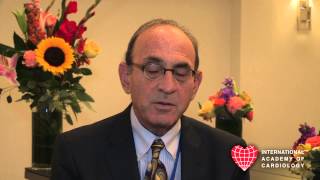
Saul Schaefer, M.D., University of California, Davis, CA, USA
Cardiac troponin I and T (cTnI and cTnT) are components of the cardiac myocyte myofibrillar apparatus that are released when these cells are injured. Current assays set “normal” at levels that incorporate 99% of the non-diseased population, with usual upper limits in the range of 0.05ug/ml. Troponin elevations are useful in diagnosing acute coronary syndrome (ACS) in conjunction with clinical, electrocardiographic, and imaging data. MORE»
|
NEW TECHNOLOGIES TO IMPROVE CRT OUTCOME

Karlheinz Seidl, M.D.,
Klinikum Ingolstadt, Germany
CRT has evolved as an established treatment for advanced heart failure symptoms, impaired LV function and intraventricular conduction delay despite substantial improvement in technology and optimization techniques 30% - 40% of pts fail to gain significant clinical benefit. What are the clinical challenges? MORE»
|
EVOLVING ROLE OF PLATELET FUNCTION TESTING IN ACUTE CORONARY SYNDROMES
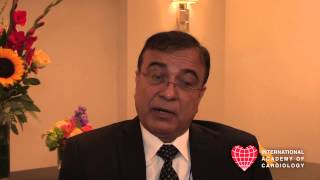
Rakesh K. Sharma, M.D.,
University of Arkansas Medical Science, Little Rock, AR, USA
The substantial reduction in ischemic events provided by the dual anti-platelet regimen with aspirin and clopidogrel is extensively published in patients with acute coronary syndrome and patient’s undergoing percutaneous coronary intervention (PCI). MORE»
|
REGULATORY T CELLS IN ABDOMINAL AORTIC ANEURYSMS

Guo-Ping Shi, M.D.,
Brigham and Women's Hospital, Boston, MA, USA
Regulator T cells (Tregs) are anti-inflammatory CD4+CD25+Foxp3+ T cells that are impaired in both numbers and activities in human and experimental coronary heart diseases. Abdominal aortic aneurysm (AAA) is an aortic disease that its pathogenesis involves extensive infiltration of pro-inflammatory cells that release pro-inflammatory cytokines to activate vascular cells and other inflammatory cells, thereby leading to arterial wall remodeling, expansion, and rupture. MORE»
|
IMAGING ACE AND ANGIOTENSIN RECEPTORS IN THE HEART
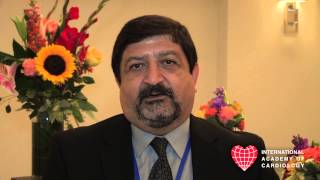
Jamshid Shirani, M.D.,
St. Luke's Hospital and Health Network, Bethlehem, PA, USA
Angiotensin II (AII), an octapeptide member of the renin-angiotensin system (RAS), is formed by the enzyme angiotensin converting enzyme (ACE) and exerts adverse cellular effects through an interaction with its type 1 receptor (AT1R). MORE»
|
STABLE ISCHEMIC HEART DISEASE: EVOLVING CONCEPTSAND THE ROLE OF ISCHEMIA
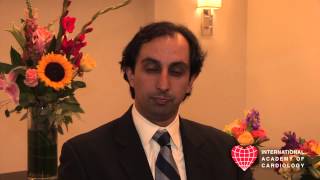
Mandeep S. Sidhu, M.D.,
Albany Medical College, Albany, NY, USA
The optimal strategy for the management of patients with stable ischemic heart disease (SIHD) has been a matter of considerable debate over the past two decades. During this time period, there have been notable technologic evolutions in catheter-based revascularization that include the advent of bare metal and drug-eluting stents, the genesis of more effective antiplatelet therapy, the continued refinement of stent delivery platforms, improving operator experience and quality improvement initiatives which have led to declining complication rates. MORE»
|
IS THE DASH DIET THE OPTIMAL DIET FOR HEART FAILURE PATIENTS?

Marc A. Silver, M.D.,
Advocate Christ Medical Center, University of Illinois. IL, USA
Background: For symptomatic heart failure (HF) the major focus remains evidence based pharmacologics and devices. Little guideline evidence exists for nutritional support of HF patients beyond recommendations on limiting sodium excess. Endothelial dysfunction has been recognized as a pathophysiologic mechanism in the progression of HF. MORE»
|
TIME TO FOCUS ON CV HEALTH (NOT CV DISEASE)
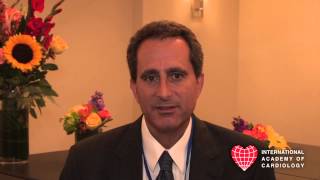
Laurence S. Sperling, M.D.,
Emory University School of Medicine, Atlanta, GA, USA
Despite rapidly advancing technologies in the treatment of CV diseases the current status of healthcare economics and global epidemiologic trends related to non-communicable diseases are unsustainable. A healthcare transformation is needed with a greater focus on CV health promotion and disease prevention. MORE» |
ROLE OF ENDOTHELIN-1 AND CAMKINASE II SIGNALING IN CARDIOVASCULAR COMPLICATIONS

Ashok K. Srivastava, Ph.D.,
CRCHUM, University of Montreal, Montreal, Quebec, Canada
Vasoactive peptides such as angiotensin II and endothelin-1 as well as growth factors regulate vascular homeostasis through signaling pathways that are triggered in both normal and disease states. These vasoactive peptides and growth factors also increase the cellular levels of calcium which, through calcium binding effector systems initiates the downstream signaling and physiological responses in target cells. MORE» |
ABLATION OF IDIOPATHIC VENTRICULAR TACHYCARDIA

Komandoor S. Srivathsan, M.D.,
Mayo Clinic, Arizona, USA
Idiopathic ventricular tachycardia occurs when ventricular tachycardia occurs in the absence of detectable heart disease. Other than syncope they can cause cardiomyopathy if Premature Ventricular Contraction is frequent. MORE» |
VASCULAR HEALING & BIORESORBABLE SCAFFOLDS: FROM PLATELETS, LEUKOCYTES TO ENDOTHELIAL CELLS
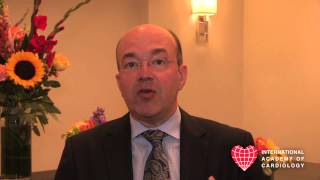
Jean-Francois Tanguay, M.D.,
Université de Montréal, Canada
Vascular endothelium damage occurs in acute situations such as following percutaneous coronary intervention or spontaneously plaque rupture. Tissue damages can also result from chronic conditions linked to cardiovascular risk factors such as diabetes, dyslipidemia and hypertension, which induce a sustained pro-inflammatory status and impair vascular endothelial cell functions. MORE»
|
OLD AND EMERGING OPTIONS FOR TREATMENT OF REFRACTORY ANGINA: A CRITICAL APPRAISAL
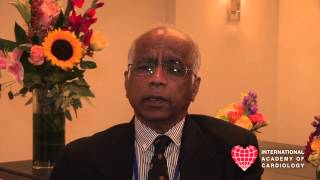
Udho Thadani, M.D.,
University of Oklahoma Health Sciences Center and VA Medical Center, Oklahoma City, OK, USA
Patients with refractory angina are considered to be not suitable candidates for a revascularization procedure, and remain symptomatic despite good medical therapy. However, some patients with refractory angina, experience a marked symptomatic relief after adjustment of their antianginal drugs and lifestyle modifications, including regular exercise. MORE» |
MOLECULAR TARGETING OF DILATED CARDIOMYOPATHY
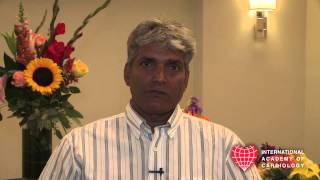
Balwant S. Tuana, Ph.D., University of Ottawa Heart Institute, Ottawa, Canada
The E2F/Pocket protein pathway regulates cardiac growth, differentiation, and death. Modulating its activity presents intriguing possibilities for targeting cardiac disease. E2F activation leads to hypertrophy and apoptosis. MORE»
|
MITOCHONDRIAL DIVISION/MITOPHAGY INHIBITOR (MDIVI) AMELIORATES PRESSURE OVERLOAD INDUCED HEART FAILURE

Suresh C. Tyagi, Ph.D., University of Louisville School of Medicine, Louisville, KY, USA
We have previously reported the role of anti-angiogenic factors in inducing the transition from compensatory cardiac hypertrophy to heart failure and the significance of MMP-9 and TIMP-3 in promoting this process during pressure overload hemodynamic stress. MORE»
|
IMATINIB: A NOVEL CANDIDATE FOR TREATMENT OF PERMEABILITY EDEMA

Geerten P. van Nieuw Amerongen, Ph.D.,
VU University Medical Center, Amsterdam, The Netherlands
Endothelial hyperpermeability and vascular leakage are significant pathogenic phenomena. Although contributing to life-threatening conditions like acute respiratory distress syndrome, they currently lack specific therapy. In a case-report we reported fast resolution of pulmonary edema upon treatment with the tyrosine kinase inhibitor imatinib. MORE»
|
PERICUTANEOUS HEMODYNAMIC SUPPORT FOR HIGH RISK PCI: INDICATIONS AND RESULTS

George W. Vetrovec, M.D., VCU Medical Center Richmond, VA, USA
Hemodynamic support has a limited but very specific and important role in the management of myocardial ischemia in the cardiac catheterization lab. Indications for its use include (1) cardiogenic shock, particularly in the setting of Acute Myocardial Infarction in which case the immediate support provides the time and hemodynamic stability to complete revascularization. MORE» |
GENDER DISPARITY IN CORONARY HEART DISEASE: BIAS, BIOLOGY, OR BOTH?
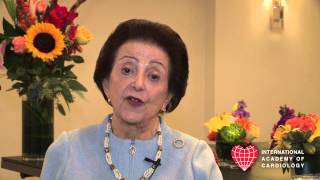
Nanette K. Wenger, M.D.,
Emory University School of Medicine, Atlanta, GA, USA
Cardiovascular disease remains a major cause of mortality for women both in industrialized economies and in developing nations. A stunning improvement has occurred in cardiovascular disease mortality for U.S. women between 2000 and 2010, attributable both to application of evidence-based therapies of established cardiovascular disease and to preventive interventions; these likely derived from research studies of cardiovascular disease in women. MORE» |
NEW GUIDELINES ON CARDIOVASCULAR RISK ASSESSMENT

Nathan D. Wong, Ph.D.,
University of California, Irvine, CA, USA
The Framingham Heart Study first noted that risk functions for predicting cardiovascular disease (CVD) risk provide an efficient way for identifying persons at high risk who need preventive therapy; this led to future recommendations regarding the targeting of the intensity of therapy to a patientís global risk. MORE»
|
IMPROVING ENERGY SUPPLY TO MEND A SICK HEART
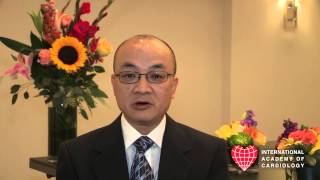
Qinglin Yang, M.D., Ph.D.,
University of Alabama at Birmingham, Birmingham, AL, USA
Substrate supply to the heart plays an essential role in maintaining cardiac performance. Perturbations in energy metabolism have been linked to pathological cardiac hypertrophy and failure. However, our understanding of the regulation of substrate utilization in the adult heart remains poor. MORE»
|
CILIA AND CONGENITAL HEART DISEASE: WHAT IS THE CONNECTION?

Maliha Zahid, M.D., Ph.D.,
University of Pittsburgh, Pittsburgh, PA, USA
Motile cilia at the embryonic node and in the respiratory tract are required for left-right patterning and for muco-ciliary clearance from the respiratory tract, respectively. The heart is one of the most asymmetric organs in the body in order to support two separate circulation systems, the pulmonary and systemic circulation, in parallel. MORE»
|
INTEGRATING NUTRITION EDUCATION INTO THE CARDIOVASCULAR CURRICULUM CHANGES MEDICAL STUDENT EATING HABITS
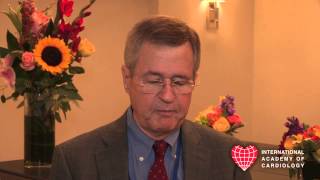
Robert Zelis, M.D. Pennsylvania State University, Hershey Medical Center, Hershey, PA, USA
Background and Objective: Surveys of medical student curricula continue to demonstrate that nutrition education is not universally adequate. One measure of nutritional educational competence is a positive change in student eating habits. MORE» |
DISCOVERY OF A NEW INDEX OF DUAL PATHWAY ATRIOVENTRICULAR NODE CONDUCTION
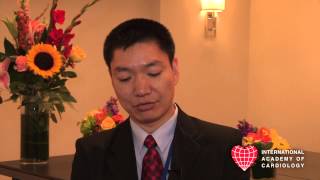
Youhua Zhang, M.D., Ph.D.,
New York Institute of Technology (NYIT) College of Osteopathic Medicine, Old Westbury, NY, USA
Dual pathway atrioventricular (AV) node electrophysiology is the basis of AV nodal reentrant tachycardia (AVNRT). Current clinical criterion for dual pathway conduction is a discontinuity or “jump” in the AV conduction curve. MORE»
|
|
|
|
|
CARDIOLOGY ONLINE NEWS |
 |
| 19th WORLD CONGRESS ON HEART DISEASE |
|
2014 UPDATE ON MANAGEMENT OF HYPERTENSION

Wilbert S. Aronow, M.D., Westchester Medical Center/New York Medical College, Valhalla, NY, USA
The American College of Cardiology Foundation/American Heart Association 2011 expert consensus document on hypertension in the elderly recommended the blood pressure (BP) in patients with primary hypertension or in patients at high risk for cardiovascular events such as those with coronary heart disease, stroke, peripheral arterial disease, diabetes, chronic kidney disease, and heart failure be less than 140/90 mm Hg in adults with hypertension younger than 80 years and the systolic BP reduced to 140-145 mm Hg if tolerated in persons with hypertension aged 80 years and older. MORE»
|
PRESENT AND FUTURE OF NUCLEAR CARDIOLOGY AND CARDIAC CT IN CAD: VALUE-BASED IMAGING

Daniel S. Berman, M.D., Cedars Sinai Medical Center, Los Angeles, CA, USA
The future use SPECT or PET, and cardiac CT will be based on their providing value by improving quality (e.g., reducing events) or decreasing costs. For prevention, coronary calcium scanning can provide value, guiding management more effectively than risk factors or other biomarkers. MORE»
|
GI PROTEINS, NATRIURETIC PEPTIDE RECEPTOR C AND REGULATION OF BLOOD PRESSURE

Madhu B. Anand-Srivastava, Ph.D.,
University of Montreal, Montreal, Quebec, Canada
C-ANP4-23, a ring deleted analog of atrial natriuretic peptide (ANP) that specifically interacts with natriuretic peptide receptor-C (NPR-C) has been shown to decrease the enhanced expression of Gialpha proteins, implicated in the pathogenesis of hypertension. MORE»
|
MANAGING ANGINA AND RISK VIA IMPROVED ENDOTHELIAL FUNCTION: THE EECP MODEL

Gregory Barsness, M.D., Mayo Clinic, Rochester, MN, USA
Enhanced external counterpulsation (EECP) is an outpatient therapy for the treatment of stable ischemic heart disease, angina and heart failure. Although a non-invasive therapy, EECP treatment produces a marked acute hemodynamic effect similar to that produced by the invasive intra-aortic balloon pump. MORE»
|
TICAGRELOR LIMITS MYOCARDIAL INFARCT SIZE- AN ADENOSINE AND COX2 DEPENDENT EFFECT
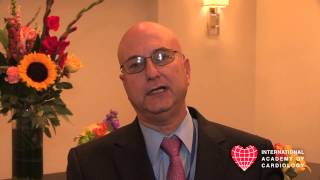
Yochai Birnbaum, M.D., Baylor College of Medicine, Texas, USA
In a phase III clinical trial (PLATO) Ticagrelor (TIC) showed better clinical outcomes than Clopidogrel (CLOP) in patients with acute coronary syndromes. In addition to P2Y12 receptor antagonism, TIC prevents cell uptake of adenosine and thus, may augment adenosine effects. MORE»
|
AORTIC REGURGITATION: IMPACT OF PREOPERATIVE SYMPTOMS FOR POST-VALVE REPLACEMENT SURVIVAL ON PROGNOSTICATION FROM MYOCARDIAL CONTRACTILITY
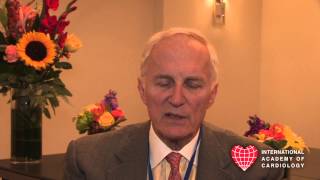
Jeffrey S. Borer, M.D.,
State University of New York Downstate Medical Center, New York, NY, USA
Both preoperative symptoms and severe preoperative myocardial contractility deficit predict survival among patients (pts) undergoing aortic valve replacement (AVR) for aortic regurgitation (AR). The interactive effects of these predictors are unknown. MORE» |
SERENDIPITY IN MEDICINE; DOES CHANCE TRULY FAVOR THE PREPARED MIND?

Robert W.W. Biederman, M.D. , Carnegie Mellon University, Allegheny General Hospital, Pittsburgh, PA, USA
Serendipity means a "fortuitous happenstance" or "pleasant surprise". It was first coined by Horace Walpole in 1754. In a letter he wrote to a friend Walpole explained an unexpected discovery he had made by reference to a Persian fairy tale, The Three Princes of Serendip. MORE»
|
SUCCESSFUL EVAR PROGRAM FOR AAA IN A RURAL HOSPITAL

Samuel M. Butman, M.D., Verde Valley Medical Center, Cottonwood, AZ, USA
Endovascular aortic aneurysm repair (EVAR) is now widely accepted as the preferred method of mitigating the risk of rupture in patients with documented abdominal aneurysms. Beginning in higher volume centers, the procedure is now performed in smaller community hospitals. MORE» |
PREDICTION OF ARRHYTHMIC EVENTS WITH POSITRON EMISSION TOMOGRAPHY
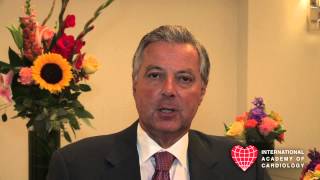
Michael E. Cain, M.D., University at Buffalo, Buffalo, NY, USA
Between 184,000 and 462,000 Americans die suddenly each year. Fifty to seventy percent of these deaths are due to ventricular tachycardia/ fibrillation (VT/VF). We tested whether hibernating myocardium or myocardial sympathetic denervation identifies patients at high-risk for developing VT/VF independently of EF. MORE»
|
THE ROLE OF PROGENITOR CELLS IN ATHEROSCLEROSIS
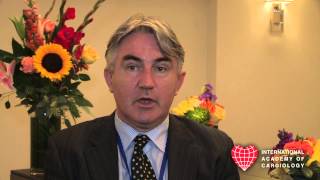
Noel M. Caplice, M.D., Ph.D., University College Cork, Cork. Ireland
We previously showed that circulating cells with smooth muscle outgrowth potential exist in the peripheral circulation and that bone marrow derived precursor cells contribute to smooth muscle cells within murine and human atherosclerotic plaque. More recently we have defined a myeloid subpopulation of cells that undergo smooth muscle cell differentiation following signalling through the CX3CR1 chemokine receptor. MORE» |
LOW GRADIENT SEVERE AORTIC STENOSIS: DIAGNOSIS AND MANAGEMENT
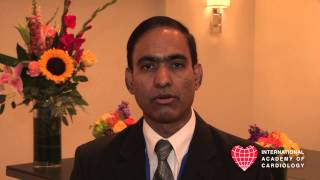
Hari P. Chaliki, M.D., Mayo Clinic, Arizona, USA
According to the most recent American College of Cardiology/American Heart Association guidelines, peak velocity greater than 4 m/sec, a mean gradient of more than 40 mmHg and a valve area of less than 1.0 cm2 is considered severe aortic stenosis (AS). Aortic valve surgery should be done promptly in symptomatic patients or patients with reduced left ventricular ejection fraction (EF) with severe AS because of a dismal prognosis without operation. MORE»
|
DUAL UTILIZATION OF EXERCISE ECHOCARDIOGRAMS AND MYOCARDIAL PERFUSION IN ASSESSING ISCHEMIA IN A CARDIOLOGY PRACTICE

Yzhar Charuzi, M.D., Cedars Sinai Heart Institute, Los Angeles, CA, USA
In patients with suspected ischemia, the data derived from one type of imaging test may be insufficient to assess its significance. In 62 patients, two imaging techniques were utilized to assess the extent of ischemia and help determine clinical management. MORE» |
CLINICAL EFFECTIVENESS OF CRT AND ICD THERAPY IN PATIENTS WITH HEART FAILURE BY RACE AND GENDER: FINDINGS FROM IMPROVE HF

Anne B. Curtis, M.D., University at Buffalo, Buffalo, NY, USA
Background: Clinical trials have demonstrated benefit for cardiac resynchronization therapy (CRT) and implantable cardioverter defibrillator (ICD) therapies in patients with heart failure (HF) and reduced ejection fraction (EF), yet questions have been raised with regard to the benefit of device therapy for women and minorities. MORE»
|
DUAL AT1 RECEPTOR/NEPRILYSIN INHIBITION ('ARNI') IN HYPERTENSION: AN IMPROVEMENT VERSUS AT1 RECEPTOR BLOCKADE?
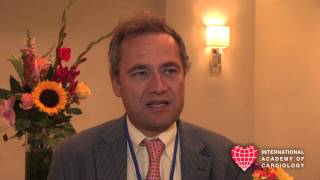
A.H. Jan Danser, M.D., Erasmus Medical Center, Rotterdam, The Netherlands
Neprilysin inhibitors (NEPi) prevent natriuretic peptide breakdown, thereby promoting vasodilation and natriuresis. On the other hand, they increase angiotensin and endothelin-1 (ET-1). The combined NEP/ACE inhibitor omapatrilat displayed potent effects in hypertension and heart failure, but these were accompanied by the occurrence of angioedema due to bradykinin accumulation. MORE» |
POTENTIAL THERAPY FOR THE PREVENTION OF SUDDEN CARDIAC DEATH
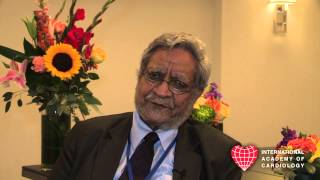
Naranjan S. Dhalla, Ph.D., M.D.(Hon), St. Boniface General Hospital Research Centre, University of Mantioba, Winnipeg, Canada
Objectives: Although sudden cardiac death is a leading cause of mortality, the mechanisms for its pathogenesis as well as therapy for prevention are poorly understood. Background: Since overactivation of sympathetic nervous system is invariably seen in subjects with high risk for sudden cardiac death, elevated levels of circulating catecholamine levels are considered to result in lethal ventricular arrhythmias and subsequent sudden cardiac death. MORE»
|
MITOCHONDRIAL DYSFUNCTION AND ARRHYTHMIC RISK: POSSIBLE NEW THERAPIES FOR SUDDEN DEATH

Samuel C. Dudley, M.D., Ph.D., Brown University and Lifespan Cardiovascular Institute, Providence, RI, USA
Mitochondria are essential to providing ATP thereby satisfying the energy demand of the incessant electrical activity and contractile action of cardiac muscle. Emerging evidence indicates that mitochondrial dysfunction can adversely affect cardiac electrical functioning by impairing the intracellular ion homeostasis and membrane excitability through reduced ATP production and excessive reactive oxidative species (ROS) generation, resulting in increased propensity to cardiac arrhythmias. MORE» |
FUNCTIONAL AND ANATOMICAL CARDIAC IMAGING IN PATIENTS WITH CORONARY ARTERY STENTS
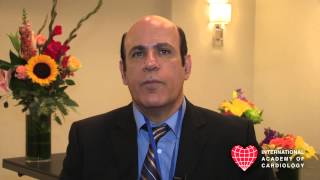
Abdou Elhendy, M.D., Ph.D., Marshfield Clinic, Marshfield, WI, USA
Coronary artery stenting has been shown to improve myocardial function, and ameliorate angina. The number of complex interventional procedures has recently increased due to technical advances. However, myocardial perfusion may be compromised after coronary stenting by acute thrombosis or the development of fibrointimal hyperplasia leading to decline in left ventricular function and increased risk of myocardial infarction. MORE»
|
REGRESSION OF HYPERTROPHY (AND FIBROSIS?) IN HYPERTROPHIC CARDIOMYOPATHY

Michael A. Fifer, M.D., Massachusetts General Hospital, Boston, MA, USA
Left ventricular (LV) hypertrophy and fibrosis are important determinants of morbidity and mortality in hypertrophic cardiomyopathy (HCM). Regression of hypertrophy remote from the interventricular septum is observed after septal reduction therapy with myectomy or alcohol ablation. MORE» |
TOLL-LIKE RECEPTOR 9 REGULATION OF COAGULATION IN ACUTE CORONARY ARTERY DISEASE
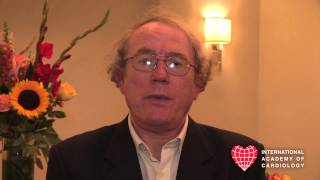
Janos G. Filep, M.D., Maisonneuve-Rosemont Hospital, Montreal, Quebec, Canada
Bacteriemia has recently been reported to be associated with increased risk of acute coronary artery disease and stroke. Bacterial DNA containing unmethyled CpG dinucleotide motifs is potent inducer of immune responses predominantly through Toll-like receptor 9 (TLR9). MORE»
|
A CASE OF ORTHOSTATIC HYPOTENSION AND RECENT ADVANCES
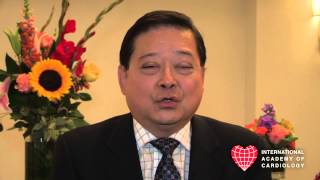
Gordon L. Fung, M.D., M.P.H., Ph.D., UCSF Medical Center at Mt. Zion, San Francisco, CA, USA
JM is a 78 year old man who had a history of hypertension and developed an ascending aortic aneurysm while under treatment. He presented to the hospital for elective prostate operation and was seen by Cardiology for evaluation of atypical chest pain. The patient gave a history of recurrent syncope over the past 6 years with syncope every 1-2 years. MORE» |
MOLECULAR DRIVERS OF VASCULAR REMODELING

Zorina Galis, Ph.D., Division of Cardiovascular Sciences, NIH, Bethesda, MD, USA
During their natural history, blood vessels undergo enduring, and sometimes irreversible structural changes in size and composition, a process commonly referred to as vascular remodeling. Many of these changes are initiated as a physiological response allowing adaptation and repair of the vessel wall, however inappropriate remodeling underlies the pathogenesis of major cardiovascular conditions, such as atherosclerosis, hypertension, or aneurysmal disease. MORE»
|
MANAGEMENT OF STABLE ISCHEMIC HEART DISEASE: OVERVIEW OF RECENT GUIDELINES

Julius M. Gardin, M.D., Hackensack University Medical Center, NJ, USA
Management guidelines regarding diagnosis and treatment of stable ischemic heart disease (SIHD) have evolved with time. In 2012, the ACCF/AHA/ACP SIHD Guidelines (Fihn, Gardin, et al.) emphasized important concepts, e.g., the following: (1) Most SIHD patients should have a trial of guideline-directed medical therapy (GDMT), including risk factor modification, before considering revascularization to improve symptoms. MORE» |
TRANSLATING T3 TREATMENT OF HEART FAILURE FROM BENCH TO BEDSIDE: FINALLY, A SAFE TREATMENT/MONITORING PROTOCOL THAT SHOULD WORK!
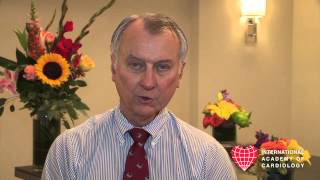
A. Martin Gerdes, Ph.D., New York Institute of Technology, Old Westbury, NY, USA
The idea of treating heart failure with thyroid hormones (THs) is not new. Unfortunately, cardiovascular clinical studies mostly using TH analogs at excessive doses demonstrated an increased incidence of arrhythmias and have largely deterred further studies. At the heart of the problem, no one has clearly demonstrated potential benefits using a therapeutic TH treatment/monitoring protocol that can be safely translated to humans. MORE»
|
CAN WE PREVENT HEART FAILURE READMISSIONS?

Paul A. Heidenreich, M.D., Stanford University, Palo Alto, CA, USA
Readmissions are common following an admission for heart failure occurring in 20-30% of patients within 30 days of discharge. Many payers including U.S. Medicare have estimated that a large fraction of these readmissions are preventable (up to 75%). MORE» |
GUIDING PRINCIPLES IN STATIN UTILIZATION: EMERGING CLINICAL AND PUBLIC HEALTH CHALLENGES

Charles H. Hennekens, M.D., Dr.P.H., Florida Atlantic University, Boca Raton, FL, USA
The current totality of evidence on statins in treatment and prevention of cardiovascular disease (CVD) includes 170,000 secondary prevention and high risk primary prevention patients. Those assigned at random to a statin had statistically significant and clinically important reductions in myocardial infarction of 30%, stroke of 15%, the need for stents and coronary artery bypass grafts of 25% and coronary death of 22%. MORE»
|
SLEEP-TIME BLOOD PRESSURE AS A THERAPEUTIC TARGET FOR CARDIOVASCULAR RISK REDUCTION
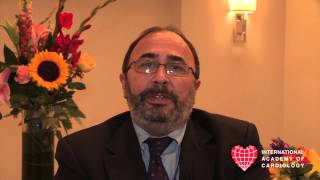
Ramon C. Hermida, Ph.D., Campus Universitario, Vigo, Pontevedra, Spain
Diagnosis of hypertension and clinical decisions regarding its treatment are typically based upon clinic blood pressure (BP) measurements, occasionally supplemented by wake-time patient self-assessment. Yet, correlation between BP level and target organ damage, cardiovascular disease (CVD) risk, and long-term prognosis is greater for ambulatory BP monitoring (ABPM) than daytime in-clinic measurements. MORE» |
COLCHICINE AND NEW MANAGEMENT STRATEGIES FOR ACUTE AND RECURRENT PERICARDITIS

Massimo Imazio, M.D., Maria Vittoria Hospital, Torino, Italy
Bacteriemia has recently been reported to be associated with increased risk of acute coronary artery disease and stroke. Bacterial DNA containing unmethyled CpG dinucleotide motifs is potent inducer of immune responses predominantly through Toll-like receptor 9 (TLR9). MORE»
|
A CASE OF ORTHOSTATIC HYPOTENSION AND RECENT ADVANCES
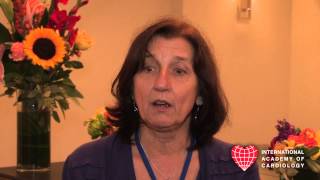
Daniela Jezova, M.D., Slovak Academy of Sciences, Bratislava, Slovakia
In comparison to coronary heart disease, the pathogenic mechanisms in stroke are very heterogeneous and reliable biomarkers to predict stroke severity and outcome are not available yet. The activation of neuroendocrine functions, particularly those involved in the stress response, represent important aspects of stroke pathophysiology. MORE» |
COLCHICINE AND NEW MANAGEMENT STRATEGIES FOR ACUTE AND RECURRENT PERICARDITIS

Hanjoong Jo, Ph.D., Dept. of Biomedical Engineering, Emory University, Atlanta, GA, USA
Atherosclerosis is the major underlying cause of myocardial infarction and stroke and preferentially occurs in arterial regions exposed to disturbed flow (d-flow) by mechanisms involving broad changes in gene expression. We have shown that D-flow rapidly induces atherosclerosis in vivo using a mouse partial carotid ligation model. MORE»
|
FRACTIONAL FLOW RESERVE (FFR) AT 2014- WHERE ARE WE AND WHERE IS IT GOING

Edo Kaluski, M.D., University Hospital, Newark, NJ, USA
New society guidelines support now the use of FFR over to assess intermediate stable native coronary lesions (now defined as 50-90% diameter stenosis when stress imaging is contraindicated, non-diagnostic, discordant or unavailable. MORE» |
CARDIORENAL SYNDROME: NOT AS STRAIGHT FORWARD AS WE USED TO THINK
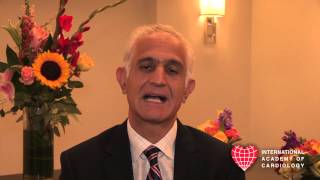
Amir Kazory, M.D., University of Florida, Gainesville, FL, USA
Simultaneous dysfunction of the heart and the kidney represents a distinct spectrum of disease states composed of complex clinical scenarios with potentially adverse outcomes. Worsening renal function (WRF) in the setting of acute decompensated heart failure (ADHF) is one such clinical setup with not yet well-characterized underlying mechanisms. MORE»
|
THE EFFECT OF BENDAVIA ON ISCHEMIA/REPERFUSION INJURY, LEFT VENTRICULAR REMODELING AND DYSFUNCTION
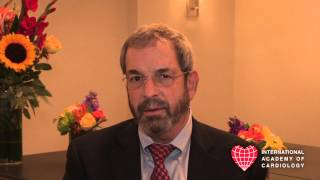
Robert A. Kloner, M.D., Ph.D., Good Samaritan Hospital/USC, Los Angeles, CA, USA
Background and Objectives: Bendavia is a small water soluble molecule that freely crosses cell membranes and localizes to the inner mitochondrial membrane where it associates with cardiolipin and reduces intracellular reactive oxygen species (ROS) production. Our objective was to determine Bendaviaís effect on myocardial infarction. MORE» |
INNATE IMMUNITY AND HEART DISEASE
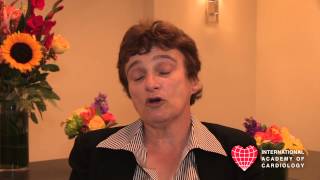
Anne A. Knowlton, M.D., University of California, Davis, CA, USA
The innate immune system is a primitive, rapid immune response that responds to detected threats by producing a rapid inflammatory response. A series of pattern recognition receptors (PRR) recognizes molecular patterns (pathogen associated molecular patterns or PAMPs) that are common to microbes and to danger signals (damage-associated molecular patterns or DAMPs) from injured cells. MORE»
|
NON PHARMACOLOGICAL AND CATHETER BASED THERAPY OF DIFFICULT TO TREAT (D2T) HYPERTENSION
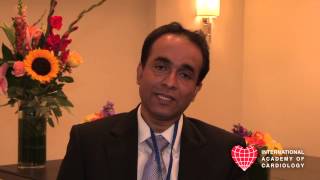
Santhosh K. Koshy, M.D., UT Health Sciences Center, Memphis, TN, USA
Resistant or difficult to treat hypertension is not uncommon and is a nightmare for both primary care physicians and specialists. It is defined as an uncontrolled hypertension with blood pressure consistently above 140/90mmHg despite adequate regimen with four or more anti-hypertensives, preferably with one that includes a diuretic. MORE» |
PCI VERSUS CABG IN MULTIPLE VESSEL CAD
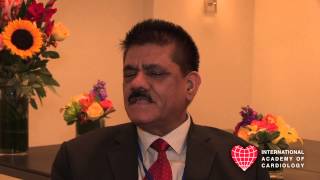
Adarsh Kumar, M.D., Govt Medical College/GND Hospital, Amritsar, India
CAD is number one killer in the world. CABG and PCI are both safe and established invasive treatment modalities for CAD. However conflicting information exists when comparing their long term efficacy in multiple vessel disease (MVD). MORE»
|
METABOLIC SYNDROME CRITERIA: CAUSE VERSUS EFFECT OF CARDIOMETABOLIC DISEASE
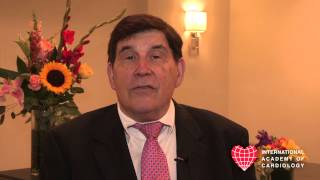
T. Barry Levine, M.D., Drexel University College of Medicine, Philadelphia, PA, USA
Although metabolic syndrome (MetSyn)-criteria provide a convenient tool to recognize individuals at increased cardiometabolic disease-risk, they appear haphazard, mixing descriptors of body-phenotype with lab-tests and a vascular condition. Are MetSyn-criteria causes or effects? MORE» |
MITOCHONDRIAL DYSFUNCTION AND DIABETIC HEART DISEASE

Qiangrong Liang, M.D., Ph.D., New York Institute of Technology, Old Westbury, NY, USA
Most diabetic patients die from heart disease or stroke, highlighting the importance of understanding and treating cardiovascular complications of diabetes. A large body of evidence indicates that mitochondrial dysfunction and increased generation of reactive oxygen species (ROS) are critical to diabetic heart damage. MORE»
|
CARBON NANOTUBES SCAFFOLDS AS A NEW BASIS FOR CARDIAC TISSUE ENGINEERING

Carlin S. Long, M.D., University of Colorado Health Sciences Center, Denver Health Medical Center, Denver, CO, USA
In our previously published work we reported that MWCNTs used as growth supports for culturing neonatal rat ventricular myocytes (NRVM) increase myocyte proliferation and induce a more negative resting potential, suggesting that carbon nanotubes promote cardiomyocyte maturation. However, the mechanistic link between the enhanced cardiomyocyte proliferation and maturation and carbon nanotubes interaction was unknown. MORE» |
USE OF FRACTION FLOW RESERVE TO PREDICT CHANGES OVER TIME IN
MANAGEMENT OF SUPERFICIAL FEMORAL ARTERY
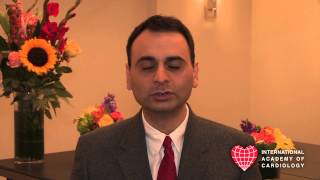
Amir S. Lotfi, M.D., Tufts University School of Medicine, Baystate Medical Center, Springfield, MA, USA
Background: Peripheral arterial disease (PAD) is a condition characterized by progressive narrowing of the arteries in the peripheral vascular bed which affect patient quality of life. The purposes of this study were to 1) establish the feasibility of performing peripheral FFR (pFFR) in the peripheral vascular circulation, 2) correlate post intervention pFFR with future restenosis, and 3) demonstrate an association between pFFR and peak systolic velocity measured by duplex ultrasound. MORE»
|
TRIGGERS OF ACUTE CARDIOVASCULAR EVENTS: CLINICAL IMPLICATIONS

Mohammad Madjid, M.D., Texas Heart Institute, Houston, TX, USA
Atherosclerotic cardiovascular events result from two separate phases of mechanistic processes. Whereas lipid accumulation and chronic latent inflammation lead to development of atherosclerotic plaques over a period of years, certain internal or external factors can “trigger” the transformation of stable plaques into unstable plaques within hours to weeks, causing an acute coronary syndrome (ACS). MORE» |
STRESS-ONLY IMAGING; A NEW PARADIGM FOR PERFORMING STRESS MYOCARDIAL PERFUSION IMAGING
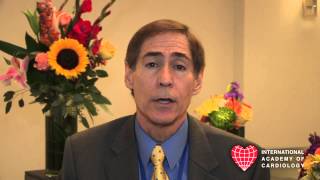
John J. Mahmarian, M.D., Houston Methodist DeBakey Heart and Vascular Center, Houston, Texas, USA
Background: There have been continued efforts over the past several years to utilize a patient-centered imaging approach when performing stress myocardial perfusion imaging (MPI). One such approach has been to choose a single day stress/rest imaging strategy so that if the stress study is normal, rest imaging is unnecessary. MORE»
|
PRECISION MEDICINE FOR TODAY AND TOMORROW: TARGETING MOLECULAR PATHWAYS FOR VASCULAR DISEASE

Kenneth Maiese, M.D., University of Medicine & Dentistry of New Jersey, Newark, NJ, USA
Molecular targeting is becoming increasing recognized as a necessary means for drug development and the successful treatment of an individual’s disease onset and progression. Although multiple pathways can be responsible for cardiac or vascular disorders in patients, kinase pathways in the vascular system that involve phosphoinositide 3-kinase (PI 3-K), protein kinase B (Akt), and the mammalian target of rapamycin (mTOR) offer especially exciting prospects for developing strategies for disease in the cardiovascular system. MORE» |
WOMEN AND HEART DISEASE: UPDATE ON PREVENTION

Shaista Malik, M.D., Ph.D., M.P.H., University of California, Irvine, CA, USA
Cardiovascular disease remains the leading killer of both men and women in the United States. However, compared to men, women have higher rates of morbidity and mortality secondary to cardiovascular disease. MORE»
|
THE PIVOTAL ROLE OF L-ARGININE IN THE ISCHEMIC HEART PRECONDITIONING - A NANOMEDICAL APPROACH

Tadeusz Malinski, Ph.D., Dr.h.c.m., Ohio University, Athens, OH, USA
Ischemic preconditioning with a short coronary artery occlusion has been shown to protect the heart against a subsequent myocardial infarction. Although several endogenous molecules have been implicated in the heart adaptation to an ischemic event, its mechanism is not well understood. A nanomedical approach was used to study, in vivo and ex vivo, the concentration changes of small molecules in the heart during preconditioning. MORE» |


|